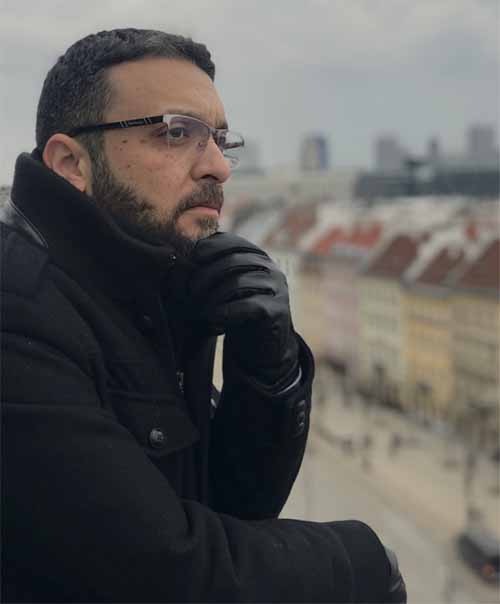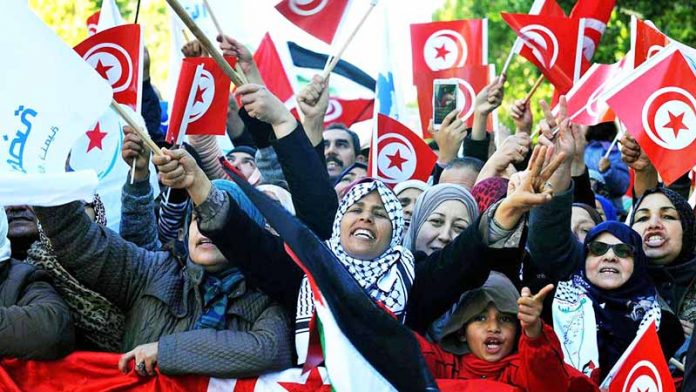Known as the starting point of the Arab Spring, which is one of the greatest social and political transformation attempts of the 21st century Middle East, Tunisia, after 7 years passed through the Jasmin Revolution, has been recognized as the most successful example of the Arab Spring process today. In December 2010, when Mohammed Bouazizi, a university graduate Tunisian, who was a peddler to make a living, gave himself a fire in the face of the police seizure of his market booth. After this birth, the wave of public protests started in Tunisia and reached nearly all the region, as far as the Western Sahara. Although all these rebellion waves were described as Arab Spring, they could not bring a “spring” to these countries, as a result. Tunisia’s overthrow of Ben Ali’s rule has been a source of hope for the peoples of the region, but the results in Tunisia and the results in other countries have not been the same. While there have been government changes in Tunisia, Egypt and Libya, for example in Syria the situation has turned into a civil war.
In the Middle East, as a structural problem, even if the regimes are elected, parliamentary and legal supervision has not been all regulated. Therefore, the participation of the people of the region in the political system has always been beside the point. This is almost entirely the origin of the authoritarian regimes in the region. The authoritarian regimes have maintained their continuity within the country through police and military intelligence agencies and have assumed that the continuation of the pressure atmosphere is indispensable for the sustainability of their power. These political structures, which do not allow any kind of opposition, have also led to a widespread unfair distribution of income by sharing wealth solely between power and its close allies. In this respect, almost all of the Middle East has become a region where social inequality, corruption and nepotism are common. All these structural problems have ultimately created a huge gap between the public and the administrators. Under these circumstances, the people have gradually felt anger against their governments and in response to this the political center has been alienated against the public.
When we look at the Arab Spring countries, it is observed that governments usually linked either monarchical structures or a military coup appear to be in power. Demand for a change of regime in a democratic sense was mostly heard against the political centers, which was not considered as legitimate by the citizens. When we look at Tunisia, Egypt, Libya and other Arab Spring countries, the repressive governmental institutions were remarkably common. In this context, Tunisia, since the time of gaining independence and declaring a republican regime in 1956, has been ruled by Habib Bourguiba and then by Zeynel Abidin Ben Ali until 2011. Although political pluralism, to some extent, was allowed under the rule of both leaders in Tunisia, a real practice of republican regime and a pluralistic democratic system were not alive. Because the only actor who determines the fate of the country has always been the heads of state. In this case, the legitimacy of the system in Tunisia has always been a problematic one and naturally questioned by the citizens. The democratic demands such as the establishment of the rule of law, the recognition of human rights and the introduction of a free electoral system have, at the end, brought people to the streets to protest the regime.
Political as well as economic problems have become one of the triggers of the change in Tunisia. The high unemployment rate and the inability of the young educated citizens to be employed constitute the first of these problems. Especially, as the youth begin to live intense anxiety on their future, the despair and anger towards the system have increased. No doubt, when the people were facing economic troubles, the luxury life of ruling class and the wealth of the close groups to it, appeared as another factor that increased the reaction of the public to the regime.
Following the success of Arab Spring in Tunisia with the overthrow of Ben Ali, the National Unity Government was established under the leadership of Rached Ghannouchi in January 2011 and then continued under the prime ministry of Muhammed Beji Cadi Essebsi. In the same year, the first free-democratic elections of Tunisia’s history were made; by which the members of the National Constituent Assembly were elected. After the results of the elections, the victory of the moderate-Islamist Ennahda Party attracted the negative reaction of secular circles in the country. In order to stop the protests, Ghannouchi, who did not want Tunisia to return to the chaotic atmosphere on the eve of Jasmine Revolution again, signed a coalition agreement with two leftist parties, the Congress for the Republic and Ettakol. In the course of this coalition government, Ghannouchi took again the reactions of the people into consideration and made Marzuki, the head of the Congress for the Republic, as the new President. Despite these political compromises of Ghannouchi, the crisis environment in the country has not left its place in a stable one. The prime ministry has been changed hands several times until 2014, and also major political plots have been committed in the country. In spite of all these efforts, the new constitution of Tunisia was successfully adopted in early 2014 with the efforts of the tri-partite coalition members and their leaders. The secular-nationalist Nida Tunisia Party, which was established just before general elections of 2011, received the first place in the elections of 2014, and Ghannouchi’s Ennahda came as the second. After the 2014 elections, Essebsi was elected the new President of Tunisia. And lastly, last month, Tunisians for the first time in their history, went to the polls to elect their local politicians, which was a new milestone in the democratization of the country.
As it is obviously seen, after the Jasmine Revolution, Tunisian internal politics has created a successful unique example in the Middle East. The parties that defend opposing political ideas and ideologies were able to compromise on the way of constructing a new democratic regime in Tunisia. Together they formed coalitions and manage to create a democratic constitution despite all kinds of internal difficulties. This is also the first constitution made by reconciliation in the Islamic world. After Ghannouchi and his party Ennahda’s proposal to put “Islam is a source of legislation” as an article to the new constitution, it was again a great political compromise to agree with the other political parties to give up this matter and instead, to place the article “The Tunisian state is a civil state based on citizenship, popular will and superiority of law” into the constitution.
When considered in the context of the old political tradition of the Middle East, the Tunisian example, as an original one, has been widely appreciated by international public opinion. For instance, in 2015, the Tunisian National Dialogue Quartet was awarded the Nobel Peace Prize for “its decisive contribution to the building of a pluralistic democracy in Tunisia in the wake of the Jasmine Revolution of 2011″. In addition, the former UN Secretary-General Ban Ki-moon has shown Tunisia as “a model for the people seeking reform”.
The above-mentioned positive developments in the political arena have made Tunisia a success story although it has not been completed yet in the Arab Spring process. One of the most important features that distinguish Tunisia from other Middle Eastern countries is that although it was an authoritarian administration, it had been, generally different from the others in the region, governed by a secular system since the time of Bourguiba. Evaluating the Middle East as a whole, the existence of a secular government shows itself in Tunisia as a vital political choice that directly affects the political tradition of a country. Secondly, Tunisia is a complete middle-class country, which distinguishes it from other countries in terms of socio-economics. Correspondingly, the high-level of urbanization and the degree of higher education are social consequences of that large middle class. As a matter of fact, educated young people constitute a significant part of those who constitute the social base of the Arab Spring in Tunisia. Another important factor is that tourism is the greatest source of income for Tunisia’s economy compared to other countries in the region. On that count, Tunisia has become a far more outward-looking country. Undoubtedly, this interaction has made Tunisia much more familiar with the Western influence in the context of modern lifestyle and ideas.
As mentioned above, even though Tunisia is an incomplete story of success in the Arab Spring, it has already created a unique place for itself in the Middle East since 2011. The progress to democratization has made the country more prominent in the region. And all those efforts to create consensus in politics mostly deserve appreciation and support instead of criticism.

Assistant professor at the Department of International Relations, Aydın Adnan Menderes University, TURKEY


